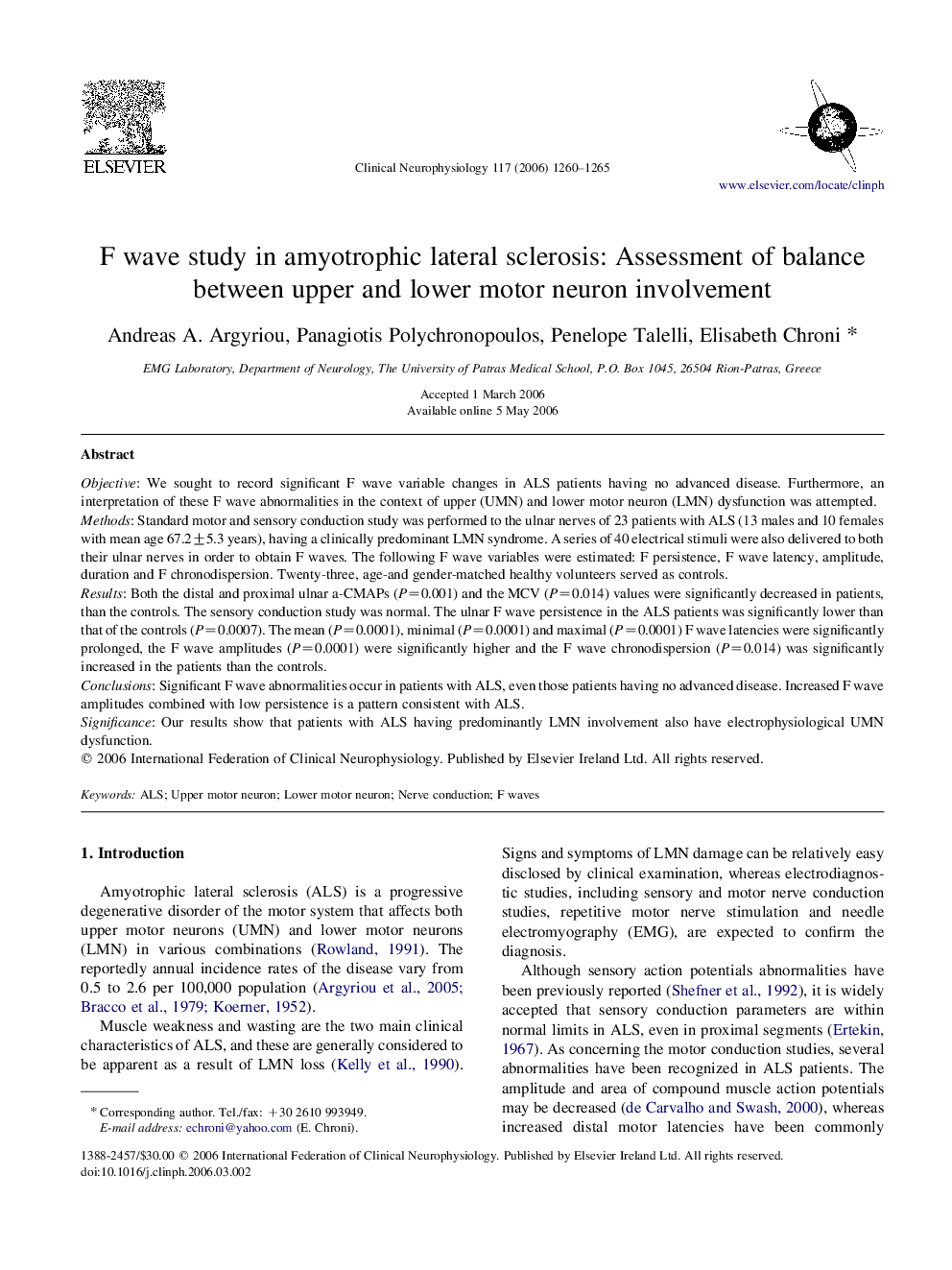| Article ID | Journal | Published Year | Pages | File Type |
|---|---|---|---|---|
| 3048734 | Clinical Neurophysiology | 2006 | 6 Pages |
ObjectiveWe sought to record significant F wave variable changes in ALS patients having no advanced disease. Furthermore, an interpretation of these F wave abnormalities in the context of upper (UMN) and lower motor neuron (LMN) dysfunction was attempted.MethodsStandard motor and sensory conduction study was performed to the ulnar nerves of 23 patients with ALS (13 males and 10 females with mean age 67.2±5.3 years), having a clinically predominant LMN syndrome. A series of 40 electrical stimuli were also delivered to both their ulnar nerves in order to obtain F waves. The following F wave variables were estimated: F persistence, F wave latency, amplitude, duration and F chronodispersion. Twenty-three, age-and gender-matched healthy volunteers served as controls.ResultsBoth the distal and proximal ulnar a-CMAPs (P=0.001) and the MCV (P=0.014) values were significantly decreased in patients, than the controls. The sensory conduction study was normal. The ulnar F wave persistence in the ALS patients was significantly lower than that of the controls (P=0.0007). The mean (P=0.0001), minimal (P=0.0001) and maximal (P=0.0001) F wave latencies were significantly prolonged, the F wave amplitudes (P=0.0001) were significantly higher and the F wave chronodispersion (P=0.014) was significantly increased in the patients than the controls.ConclusionsSignificant F wave abnormalities occur in patients with ALS, even those patients having no advanced disease. Increased F wave amplitudes combined with low persistence is a pattern consistent with ALS.SignificanceOur results show that patients with ALS having predominantly LMN involvement also have electrophysiological UMN dysfunction.
